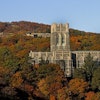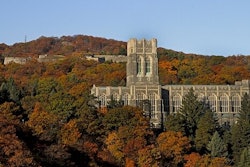 Gathering at the River: What Black Colleges Should Do Now
Gathering at the River: What Black Colleges Should Do Now
Dr. M. Christopher Brown II
Another verdict has come in from the now infamous Southern Association of Colleges and Schools — the accreditation of Barber-Scotia College has been rescinded. The language of the letter and the media reports are eerily reminiscent of both Morris Brown and Mary Holmes colleges. The emerging conversation surrounding Barber-Scotia College and unnamed others has reignited the questions from last year and many years about the nation’s Black colleges. Are Black colleges in trouble? Can they all survive? Do Black college alumni give to their alma maters? Will Barber-Scotia remain open despite its lack of accreditation?
Regrettably, these yes-or-no interrogatives cloak a series of other “how” and “why” questions. How have Black colleges delivered such a high-quality education over time with limited resources? Why has the fiscal health of Black colleges become such a contentious issue? How will Black colleges survive this current era of controversy, challenge and in some cases, crisis?
In this era of crisis in accreditation, leadership and fiscal health on many campuses, Black colleges must share their successes with the public. According to the U.S. Department of Education, the 105 Black colleges enroll approximately 300,000 students and employ approximately 60,000 persons. While they enroll barely 15 percent of African American undergraduates, they award 28 percent of the Black bachelor’s degrees. Additionally, Black colleges grant 16 percent of the Black first professional degrees, 15 percent of the Black master’s degrees, and 9 percent of the Black doctoral degrees. These institutions are valuable generators for the nation’s economies and must remain efficient members of the higher education landscape.
Despite their institutional strengths, educational achievements and social benefits, there are still significant outcries about whether Black colleges should continue to exist. The “Do we still need Black colleges?” question appears racially motivated given the absence of similar questions when majority institutions face fiscal, administrative or enrollment issues. The challenges that Black colleges face are not because they have homogenous enrollments and staff, but are often the result of low enrollments, meager endowments and scant support from the general public and relevant shareholders.
I do not intend to divorce institutional actors from their complicity in … I mean responsibility for crises on our campuses. However, any higher education researcher can confirm that most Black college issues are identical to challenges faced by other small, private colleges with modest enrollments, changing curriculum and invisible endowment returns. The issues that commonly result from under-funding, governance and performance rarely amount to a loss of accreditation for majority campuses.
The time has come for Black college presidents and stakeholders to hold a private and honest conversation about the state of their institutions — their strengths, weaknesses, opportunities and threats. Of particular focus in this meeting must be the role and composition of boards of trustees — the fiduciary agents and academic policy-making unit of the college. Campus leaders must detail and outline a financial program that includes adoption of responsibility-centered management, budgeting techniques and economic development. They also need to address changing accreditation requirements, student loan default thresholds and employment projections. This should be joined by the best guidance from higher education research and policy communities on institutional capacity building, strategic assessment and models for effective and efficient functioning amid institutional complexity. In short, we must have a private meeting about how to best carry out the mission of Black colleges.
In the words of that aged hymn, “Shall we gather at the river?”
— Dr. Brown is executive director and chief research scientist at the Frederick D. Patterson Research Institute in Fairfax, Va.,and associate professor of education at Penn State University.
© Copyright 2005 by DiverseEducation.com


















